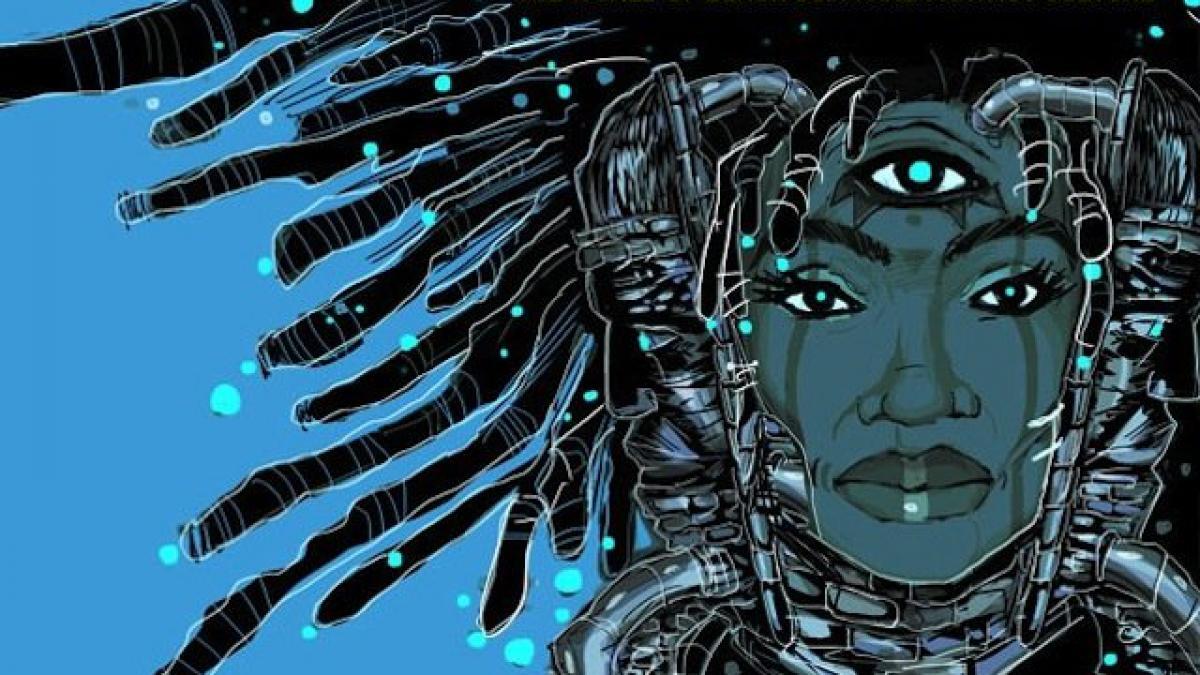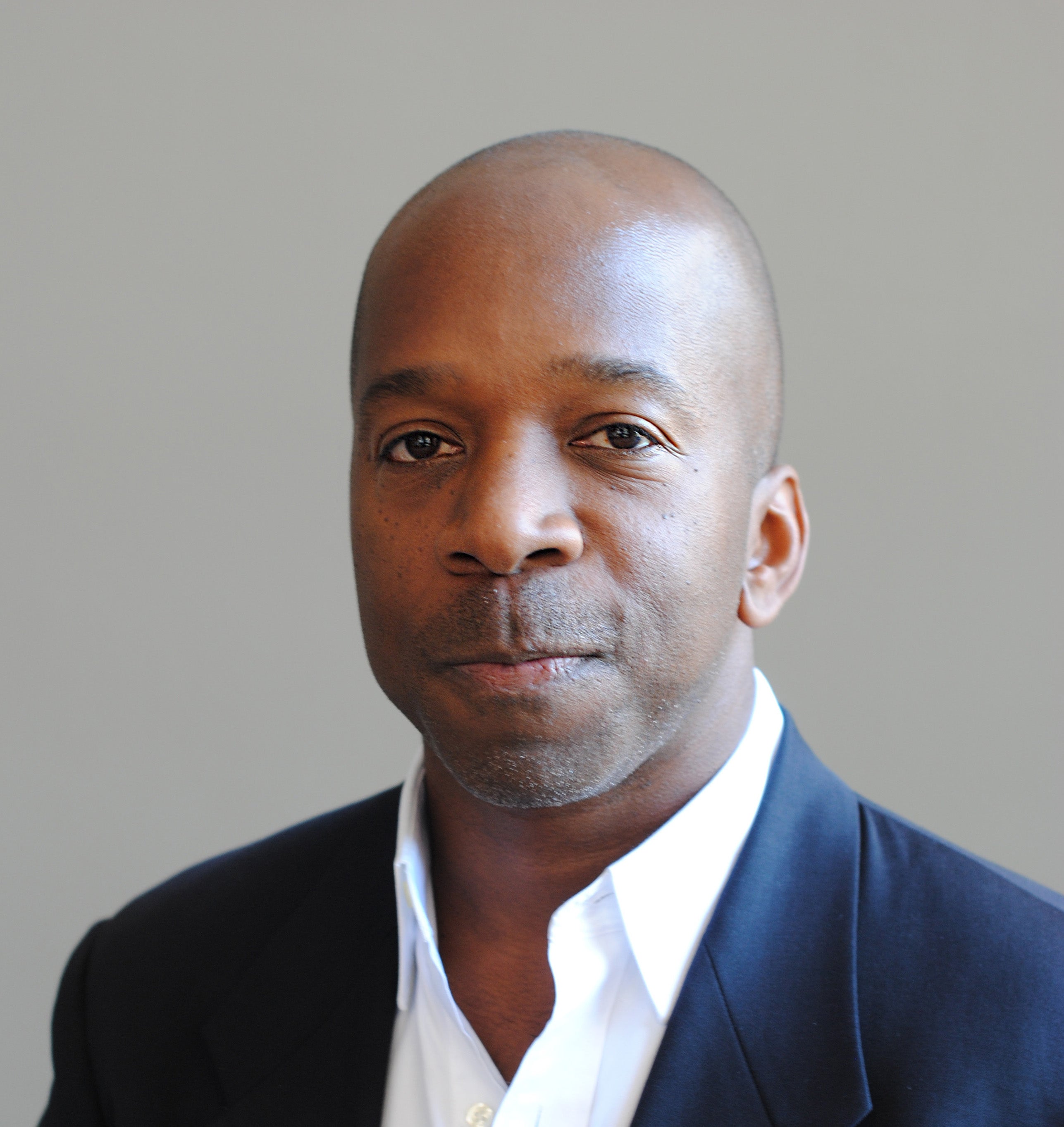AfrofuturismAfrofuturism has also been called the Black Speculative Arts Movement. is a long-emerging art and cultural movement that views music, literature, films and television through a black lens.
Somewhat controversial, the term — an intersection of sci-fi, art and black pride — was coined by a white writer a quarter-century ago but has roots in the work of sociologist W.E.B. Du Bois. Since then, Afrofuturism has gone from strength to strength and has entered the mainstream realm.
It can be seen in blockbuster movies such as "Black Panther," the music videos of Janelle Monae and in the literature of Sheree Renée Thomas.
In celebration of Black History Month, Arizona State University will host two events on Afrofuturism:
• 7 p.m. Feb. 12 — ASU’s Center for Science and the Imagination is partnering with FilmBar in Phoenix for a screening of "Blade." Based on a Marvel comics character, the 1998 action-horror flick is a groundbreaking Afrofuturist work that led to paradigm-shifting genre films like "Black Panther." Buy tickets.
• 2 p.m. Feb. 13 — ASU’s Center for Science and the Imagination, the Institute for Humanities Research and the School for the Future of Innovation in Society will co-host an event on the ASU Tempe campus with film critic and philosopher Steven Shaviro, who will lecture on Afrofuturism and “cyborg feminism,” using popular media as the lens to examine themes of equity and inclusion in alternate science fiction. The event is free, but seating is limited. RSVP.
ASU Now spoke with Michael Bennett, an associate research professor and assistant director in ASU’s School for the Future of Innovation in Society, the Center for Science and the Imagination and the Risk Innovation Lab, as well as a lecturer in the Sandra Day O’Connor College of Law. Bennett took time to answer a few questions about Afrofuturism before he hosts the vampire-themed screening and discussion of "Blade" on Feb. 12 at FilmBar.
Michael Bennett
Question: Can you define Afrofuturism, and why is it important to African-American art?
Answer: Any attempt define Afrofuturism is akin to efforts to define other rich domains of artistic and art-inspired activity — say, a subfield of modern English-language poetry or punk rock. Can you generate a definition? Sure. But having that definition express anything vital about Afrofuturism is virtually impossible.
Like those subfields of poetry and punk rock, Afrofuturism is dynamic: more like a conversation than cement.
Nevertheless, if the work foregrounds both black people and technoscience, if it explores one or more ways to convert catastrophe into an energy source for more and better living on the part of black people, and if it presents concepts of time — past, alternate pasts' presents, alternate presents, futures — as intrinsically political, then the odds are good you’re being confronted by an Afrofuturist work.
Q: Afrofuturist ideas seem to go beyond cinema and can be seen in music, television and other art forms. When did this genre begin, and how did it develop over the years?
A: Pursuit of a meaningful origin story and birth date for Afrofuturism are also quixotic and bound to disappoint. Certainly Afrofuturism gains considerable momentum in the early 2000s as institutional and independent scholars like Alondra Nelson and Sheree Thomas start exploring the domain. It’s noteworthy that women have always occupied the center of gravity of Afrofuturism.
However, as far as the musical, textual and visual fodder go, Afrofuturists lay claim to works stretching back to the mid-20th century, like the works of Sun Ra and Nichelle Nichols' depiction of Uhura in "Star Trek," and even earlier to W.E.B. Du Bois' speculative fiction. Some Afrofuturists stretch back to the 19th century, even, and claim Martin Delany, the progenitor of black nationalist thought, and his fictional writings as kindred.
However, Afrofuturism had expanded, helium-like, to encompass a wide scope of mostly artworks, but also philosophical perspectives, and increasingly political projects focused on black culture, technoscience and futurity.
Q: On Feb. 12 you’ll be hosting a screening of "Blade" starring Wesley Snipes. You have credited this movie as a “groundbreaking Afrofuturist work," saying it provides the foundation for the paradigm-shifting films we’re seeing today. Why do you believe this to be true?
A: When "Blade" was released in 1998, Marvel Studios was nearly on its deathbed. "Blade" was essentially a Hail Mary effort on the part of the studio. Wesley Snipes had dreamed of doing a "Black Panther" movie at that time, but the project failed to launch. Snipes took his thoughts about how "Black Panther" should be presented onscreen and used them to fashion "Blade."
"Blade" turned into a financial success for Marvel. But, importantly, it also served as proof of concept for both Marvel superhero films writ large and, importantly, the viability of such films centering on a black character and aesthetic. In that sense, "Blade" paved the way for "Black Panther," but only after "Black Panther" paved the way for "Blade."
Q: What are some other Afrofuturist movies or roles you can point to in cinema and television?
A: In addition to "Blade" and "Black Panther," there's "Sorry to Bother You," "Get Out," "The Matrix," "Brother from Another Planet," "They Live," "Born in Flames" and "A Wrinkle in Time." Much of the music and music videos of Janelle Monae, "Hidden Figures," Uhura/"Star Trek," Dualla/"Battlestar Galactica" reboot, Colonel Tigh/"Battlestar Galactica" [1978-79 series], and original Lando and Finn in the Star Wars films.
Q: Where do you see Afrofuturism going from here?
A: I see three different future directions of Afrofuturism: In one, Afrofuturism fizzles after another five to 10 years, say around 2030. A new phase of black cultural production becomes fashionable, attractively edgy or politically necessary and obsolesces Afrofuturism.
In a second, Afrofuturism calcifies into a hegemonic mode of art accounting for the majority of the work produced by members of the African diaspora.
It's also possible, perhaps even probable, that Afrofuturism becomes the fuel for a genuine political movement, or perhaps a political party.
Top photo: Cover art by John Jennings from "Afrofuturism: The World of Black Sci Fi & Fantasy Culture" by Ytasha Womack.
More Arts, humanities and education
ASU FIDM students to see their designs on the runway at Uncertainty Fashion Showcase
Nola Hill is perfecting every stitch of her fashion design collection, which she started conceptualizing last summer.She is among 30 ASU FIDM fashion design students who have been working late into…

ASU+GSV Summit brings experts together to discuss innovation in education
This week, Arizona State University President Michael Crow and other university leadership joined education and learning experts from around the globe at the ASU+GSV education technology summit in…

ASU professor's project helps students learn complex topics
One of Arizona State University’s top professors is using her signature research project to improve how college students learn science, technology, engineering, math and medicine.Micki Chi, who is a…



